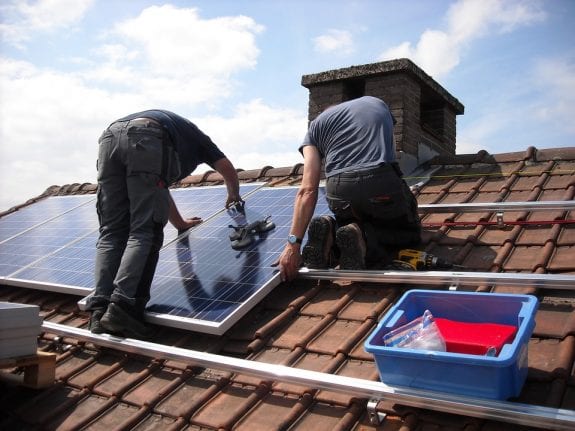Name: Matt
Email: matt@reillyroofing.com
By Matt Reilly
Sustainable wall and roof solutions
When it comes to green homes, green building, or green living solutions in general, what they all have in common is energy-efficiency or sustainability. The main aim of a green building is to try and save as much energy as possible. Various small factors affect the amount of energy required by a building. For example, if the exterior walls and roofs are insulated, the energy required to cool the interiors (through air conditioning and fans) is reduced. Another way to make your home energy-efficient and increase its life-span is if you choose the right roofing solutions and wall material.
Roof solutions
A sustainable roof protects your home from moisture and leaks, prevents energy loss, lasts for many years and is recyclable. Here are some of the most important things to consider for a sustainable roof.
1.First of all you should consider roofs that are high rated. This means roofs that have a longer warrantee. They will save you money and are better for the environment. Roofs that are rated to last 50 years require the same amount of energy to be made as those rated to last 15 years. For example metal or slate roof can easily last 100 years. They may be more expensive but are more economic in the long run and can be recycled.
- Reflective roof safe also a smart and environmentally-friendly choice. They use up to 40% less energy used for cooling according to the Environmental Protection Agency. They increase the resistance to UV damage which, in turn, increases the longevity of the roof.
- Recycled roofing materials are always a good choice for you and the environment. There are hundreds of roofing materials that are available with 50% or more recycled content. These products usually also have long warrantees that can last up to 75 years.
- Metal roofs have some of the longest warrantees, are very easily recycled and look attractive. They are the lightest, most enduring roof materials. To begin with, they are completely non-combustible and, therefore, one of the safest exterior features you can put on a building or a house. They also reduce the roof weight and their maintenance is reduced to an absolute minimum, bringing them as close to a permanent roof solution as possible.
- Other sustainable roof materials include wood shakes or slate, where plastic and rubber are recycled and formed to emulate and the result is a very durable, sustainable roofing material. They are usually made from a natural, organic and recycled material.
- Solar/photovoltaic panels for your roof are pollution-free producers of electricity for your home, and at the same time s cost-effective power supply. They turn sunlight into electricity and reduce your utility bills and energy consumption.

Solar Panels Roof
6. Green roofs are another way to go.They are partially or completely covered by vegetation, they absorb rainwater and prevent runoff, provide insulation for your home, and reduce the heat island effect in urban environments
Wall solutions
Choosing a material for your wall is very important because walls are responsible for most of the heat loss from your house.Another thing to consider is the breathability of the walls as breathable walls can help to regulate the humidity, creating a healthy internal environment.
Here are some of the best choices for sustainable wall materials:
- Non-Fired Bricks
They are made of clay, which is dried naturally, without heat.The bricks are breathable with good thermal qualities, and create less pollution and CO2.
- Straw
Straw walls are easy and quick to build. They naturally provide very high levels of insulation for a hot or cold climate. As straw is a rapidly renewable resource, the walls are sustainable and affordable.
- Rammed Earth
These are walls where earth is tamped down very tightly in wooden forms. The materials used are raw and the walls are non-combustible, very insulative, strong and durable.
- Wood
There are still many advantages to wood walls. Wood is available locally almost everywhere and the build is easy and cheap.It is highly insulative, load bearing, it absorbs CO2 as it grows, and therefore helps reduce carbon emissions.
In order for your home to be sustainable and energy efficient, it is important to think about the kind of roofs and walls you have, and consider the listed sustainable solutions. Roofs and walls are the basis of your house. With good choices and solutions for your roofs and walls, your home can also be sustainable. This means less energy consumption, cutting utility costs and better care for the environment.
Image credit: pixabay
Author: Matt Reilly http://www.reillyroofing.com/
If you would like to submit a guest post on food, wine or travel to Where and What in the World, I would be happy to feature your travel experience , drink, special wine tasting, or family or simply delicious recipe. If you go to submission tab, you will see how to submit, as well as have the opportunity of telling me if you would like to would like to be a regular contributor. When uploading a file for submission, you are also able to upload jpegs. Please feel free to put a last paragraph about you and a link to your profile. No html please. You can also include a head shot.













